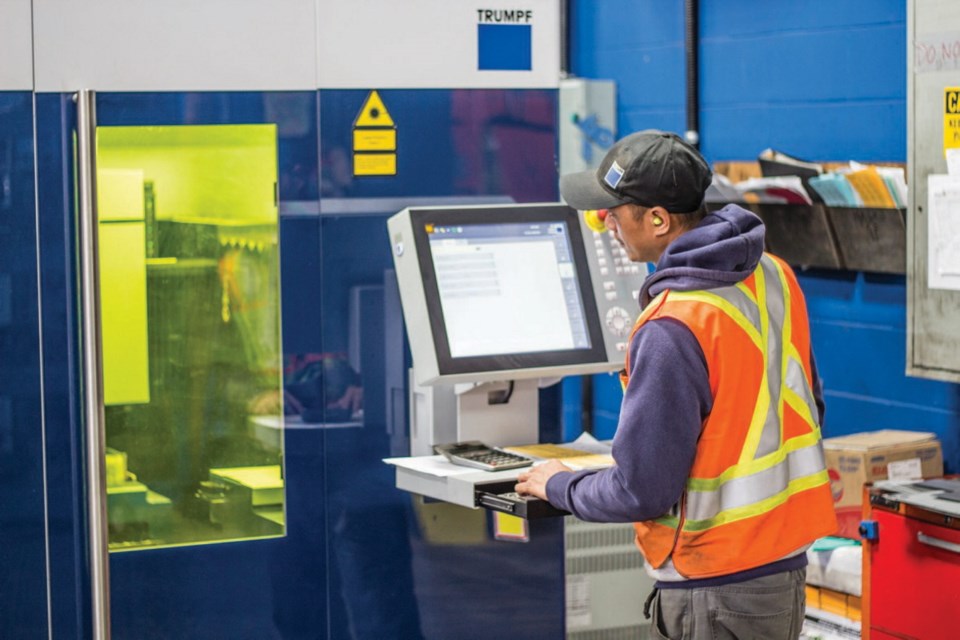Sales are on track to increase by 15 per cent this year at Sherwood Industries in Central Saanich, where Enviro brand fireplaces are manufactured from scratch and shipped to local and global markets.
The business is a major part of Greater Victoria’s manufacturing sector, which is predicted to be the region’s top economic performer this year, according to the Spring Outlook Report from the Conference Board of Canada released on Thursday.
The Conference Board is forecasting that the gross domestic product in the capital region will expand by 2.1 per cent this year and by that much again in 2018.
Sherwood benefits from the low Canadian dollar in relation to the U.S. dollar, said company vice-president Stuart O’Connor, adding that the difference also discourages American competition from moving here.
About 60 per cent of the Enviro product is shipped to the U.S. The company’s overseas markets include Europe, which takes a lot of pellet fireplaces, as well as New Zealand and Australia.
In North America, the company is experiencing demand for gas fireplaces as customers switch from wood, O’Connor said.
“Our growth is also coming with a lot of new development.”
Linear gas fireplaces have taken off in popularity. “It is a category that did not exist 10 years ago that now has been growing every year.”
The company has invested $2.8 million on new equipment in the past two years, O’Connor said. This includes a $1-million state-of-the-art fibre-optic laser cutter from Germany that easily slices through sheets of steel.
Between 150 and 200 employees are on the job, depending on the time of year.
“We cut. We bend. We weld. We grind. We paint. We assemble the components. We do everything here, as well as the design work and the development and testing.”
This year’s projections follow a 12 per cent sales increase from 2015 to 2016, O’Connor said.
“Victoria’s manufacturing industry will be the region’s top performer this year, though output growth is expected to decelerate as major contracts reach completion,” the Conference Board’s report said.
“At the same time, the construction industry is anticipated to make healthy gains thanks to robust residential investment.”
The capital region posted gains of 2.7 per cent in both 2015 and 2016, the report said. Prior to those years, the local GDP grew at just 1.1 per cent between 2010 and 2014 as the provincial government tightened its financial belt, it said.
Greater Victoria service industries such as wholesale and retail trade, finance, insurance, and real estate are also looking bright.
Transportation and warehousing will be “one of Victoria’s best-performing services industries and expand a further 2.5 per cent in 2017 and 2.9 per cent next year,” the Conference Board said.
“The sector will be boosted by increased tourism driven by healthy flight and cruise traffic, but also by rising demand for its services from the manufacturing and construction sectors.”
Greater Victoria employment is expected to rise by 1.8 per cent this year. Last year, the capital region’s employment numbers hit a nine-year-high gain of 3.3 per cent, the report said.
The capital region’s unemployment rate was 3.7 per cent in April, the lowest in the country.
The Conference’s Board sunny outlook comes out as the Canadian Federation of Independent Business releases a new report saying that B.C. businesses are the most optimistic nationally. The federation measures whether owners expect their business to improve its performance next year.



